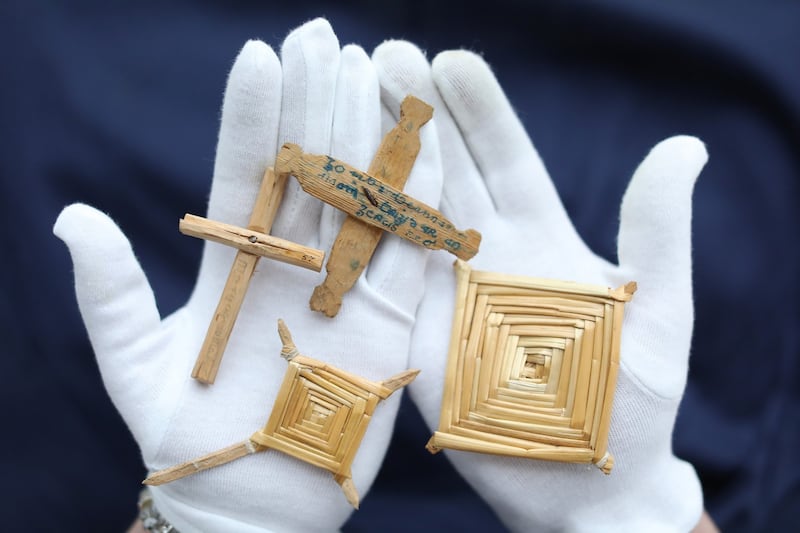A handcrafted “womb” cross , symbolising St Brigid’s supposed powers as a patron saint of fertility, is one of 21 items going on display for the first time at the National Museum of Ireland – Country Life in Castlebar, Co Mayo, from Tuesday.
The exhibition of 21 St Brigid’s crosses from all over Ireland is being launched on February 1st, the saint’s feast day.
As items were being unwrapped on Monday prior to being showcased, Clodagh Doyle, keeper of the Irish Folklife Collection at the museum, said the crosses were collected as a result of an initiative by the Irish Folklore Commission in the early 1940s.

Referring to the “womb” cross, she explained: “In olden times, a newly-wed couple would often be gifted a fertility cross. This would be placed on the underside of the thatch or over the door.”
St Brigid, who was born in the 6th century, is said to have travelled widely on the eve of her feast day imparting blessings and delivering protection to homes and farms where crosses were hung in her honour. She is Ireland’s only female saint. The Government has announced that from next year, February 1st will be designated a national holiday in her honour.
Ms Doyle explained that while the four-armed version is the most familiar St Brigid’s cross, there were different regional styles and variations. Although rushes – an easily sourced material – was very popular, crosses were also made of straw, wood and sometimes fabric.
“Families would recite prayers, bless the rushes or straw with holy water and then each make the crosses,” she explained. “They would then hang them over the door and the farm buildings to welcome St Brigid.”
The crosses on display in the museum at Turlough Park represent only a fraction of the hundreds of crosses donated by the public in the 1940s.
“The selection of 21 is difficult but it is also an opportunity to showcase the variety of crosses that existed,” Ms Doyle said.
Marking both the announcement of the new national holiday from 2023 and the 21st anniversary of the opening of the National Museum of Ireland – Country Life, the museum has announced Folk 21, a programme of events that will run throughout the year.
“Next year we will have our public holiday dedicated to Brigid. The following year will mark the 1,500th anniversary of her death. We’ll have plenty of reason to think about Brigid in the years ahead.”








